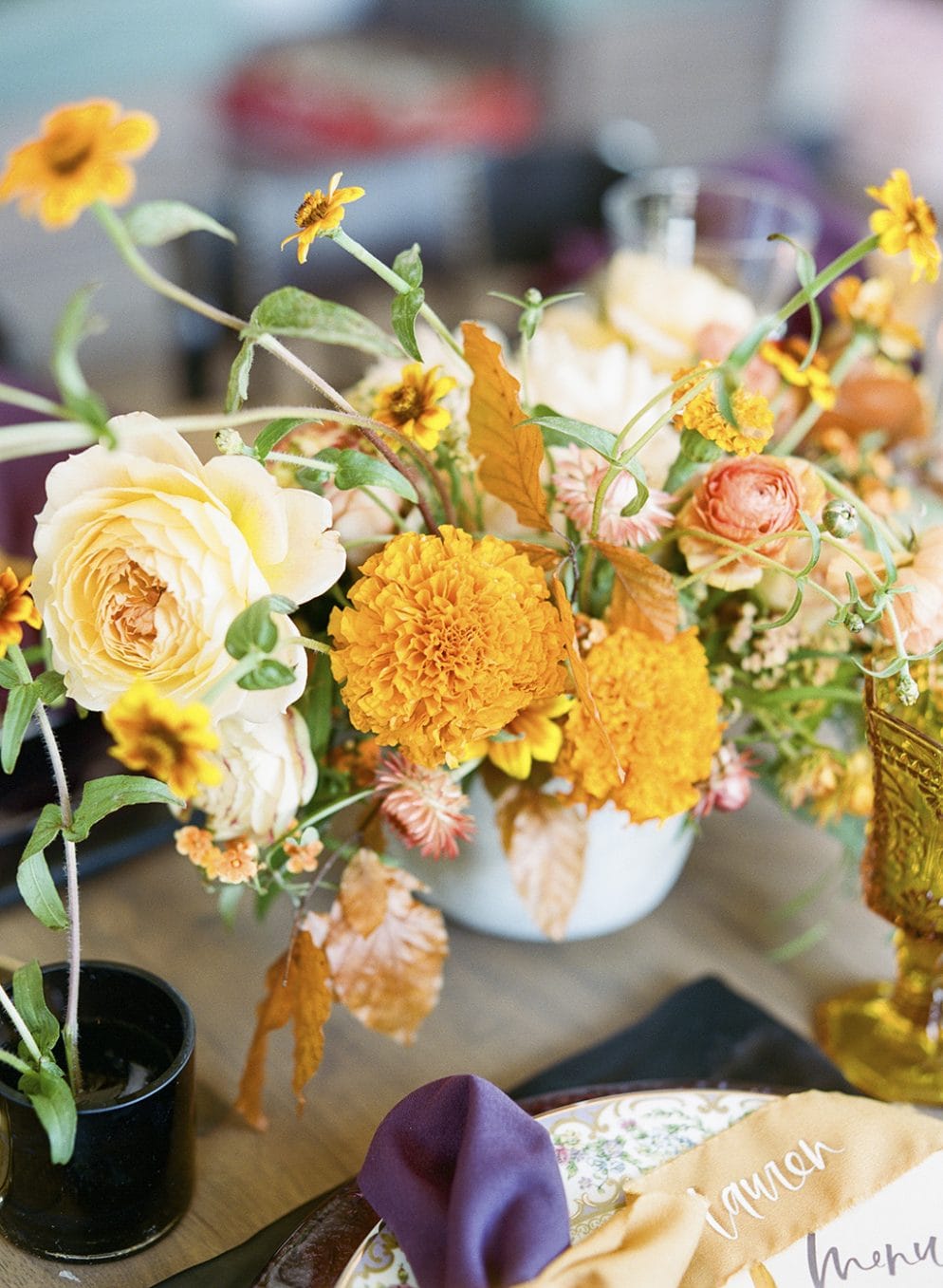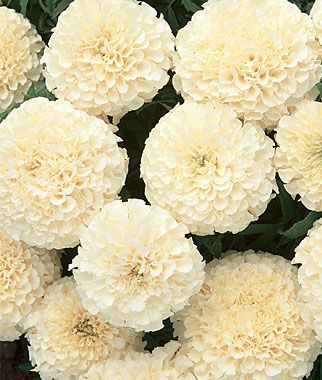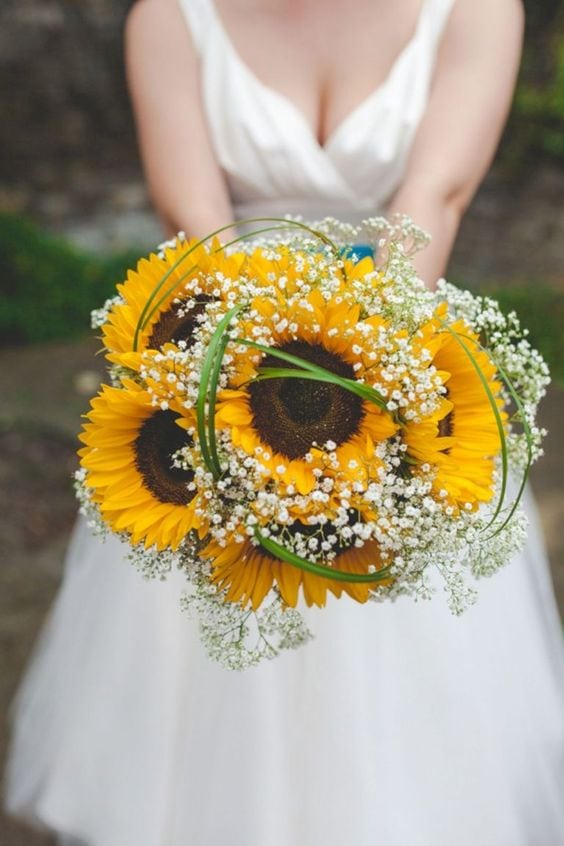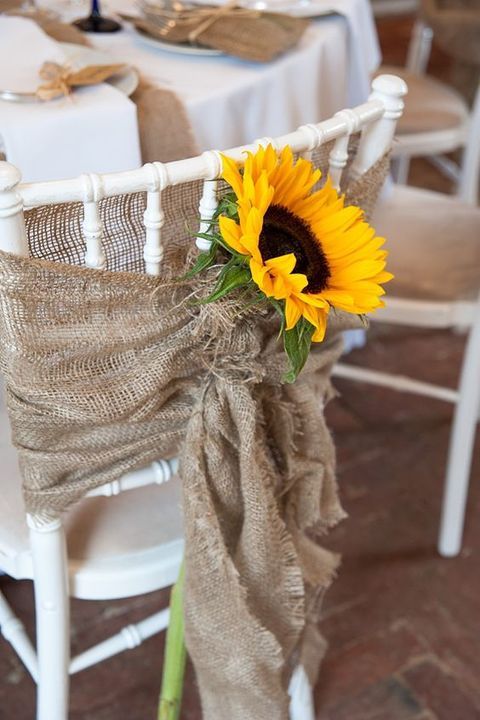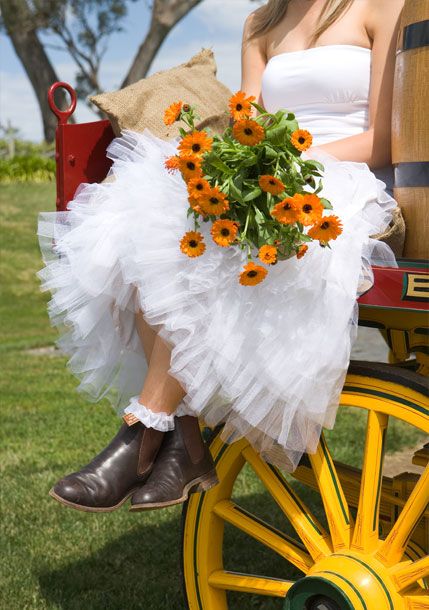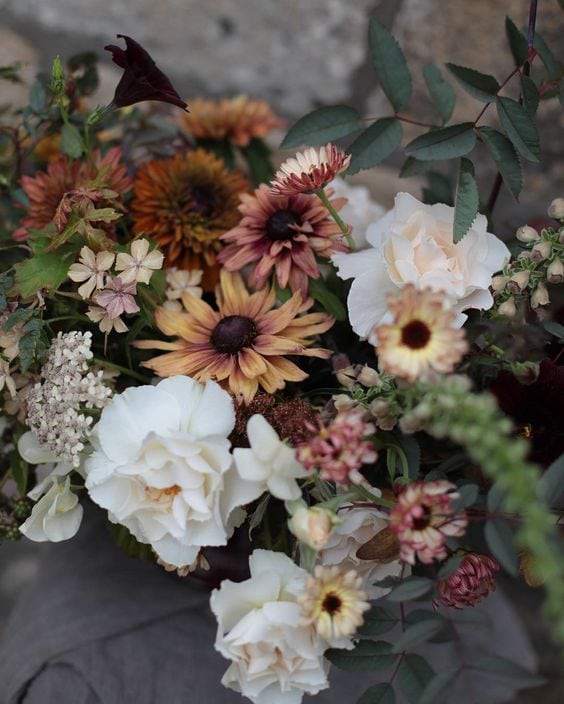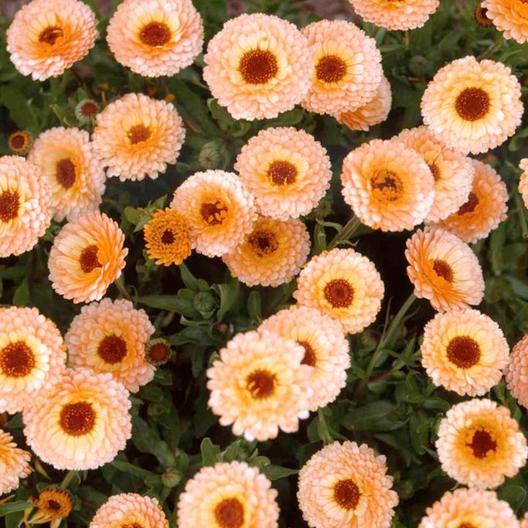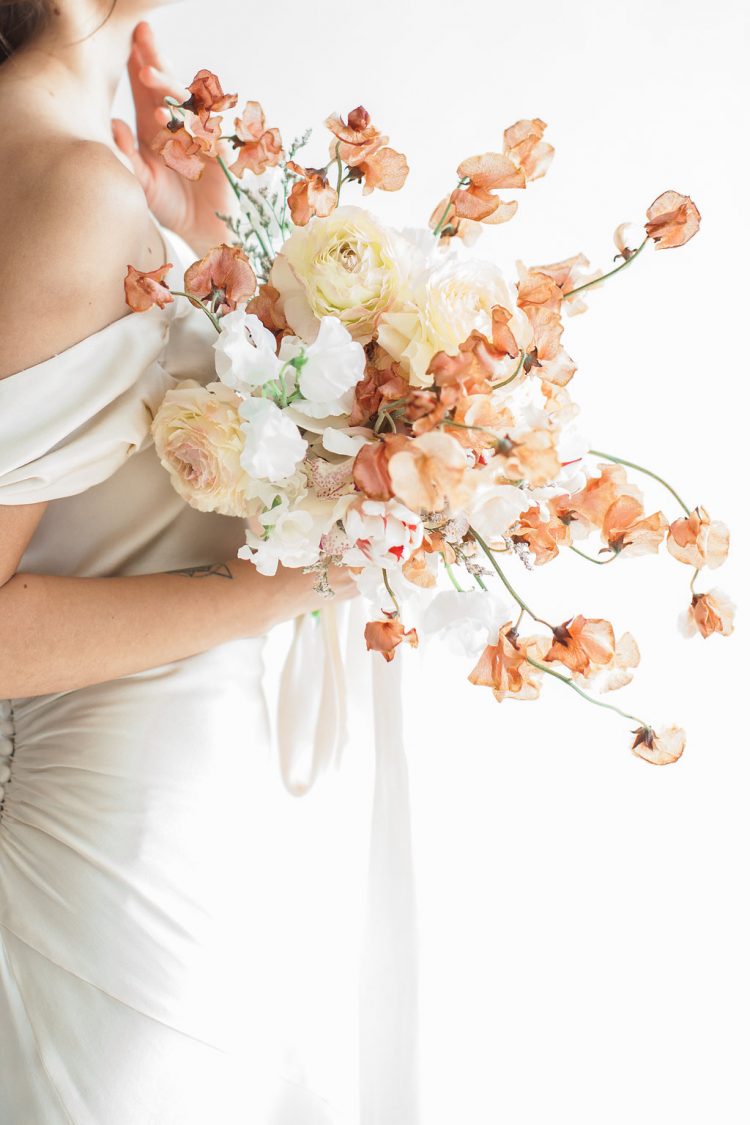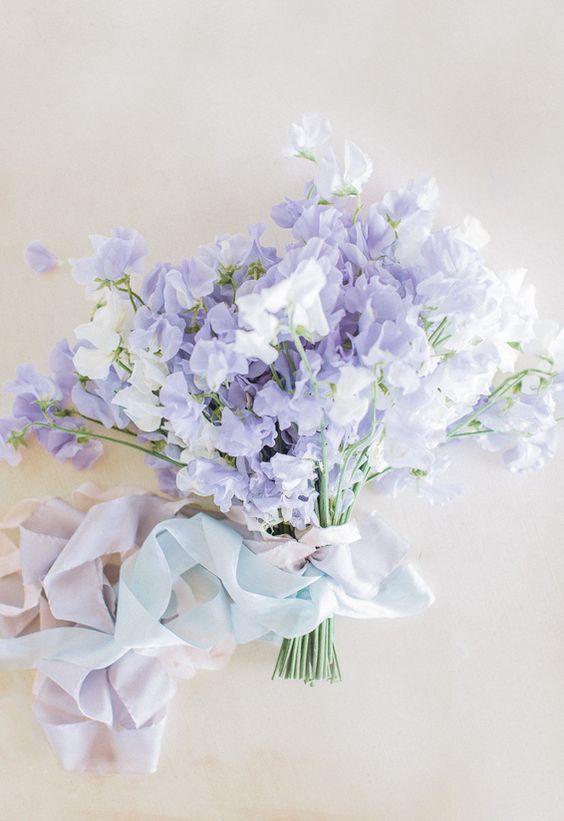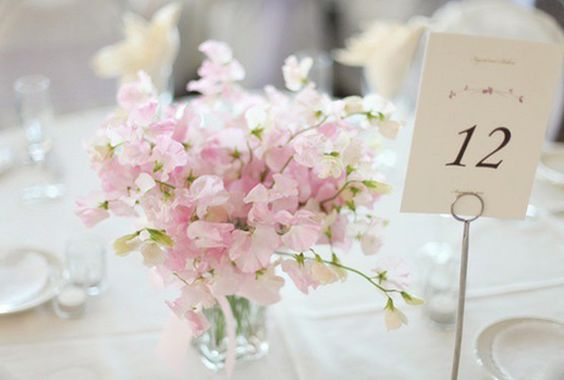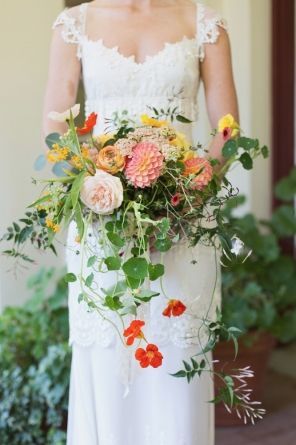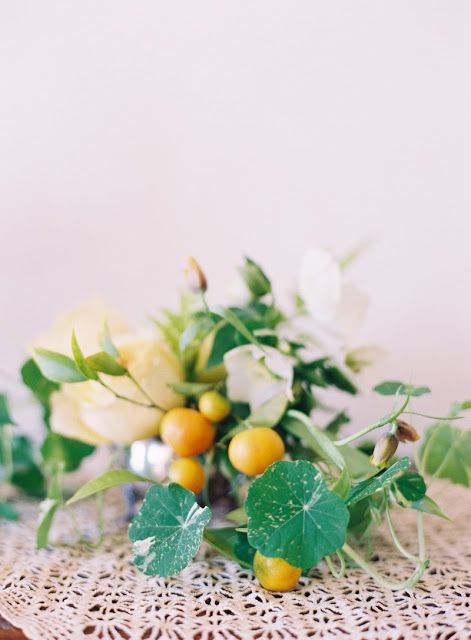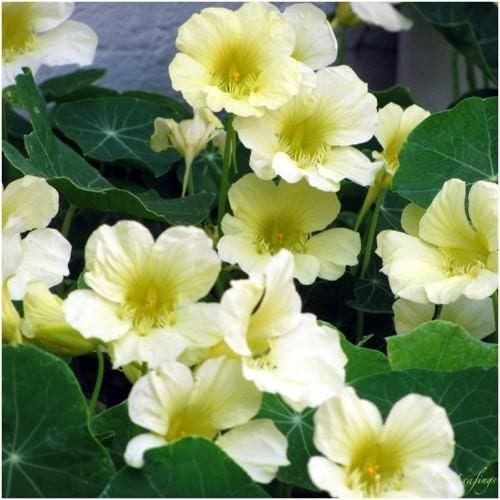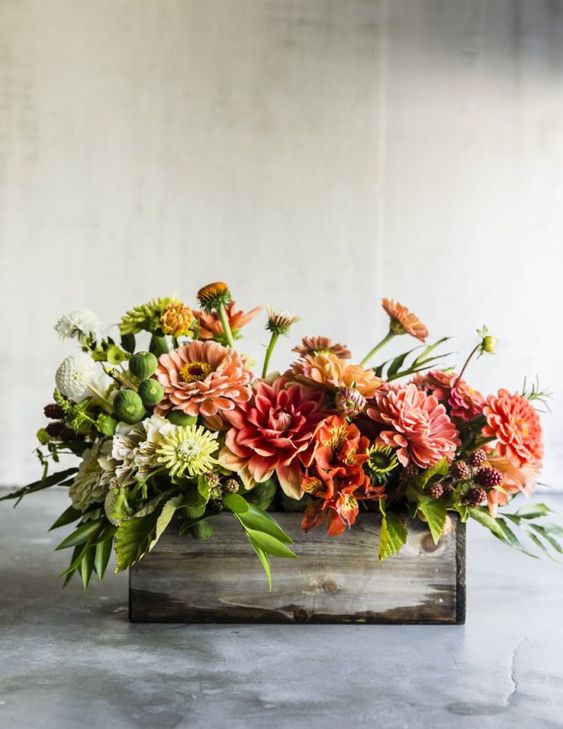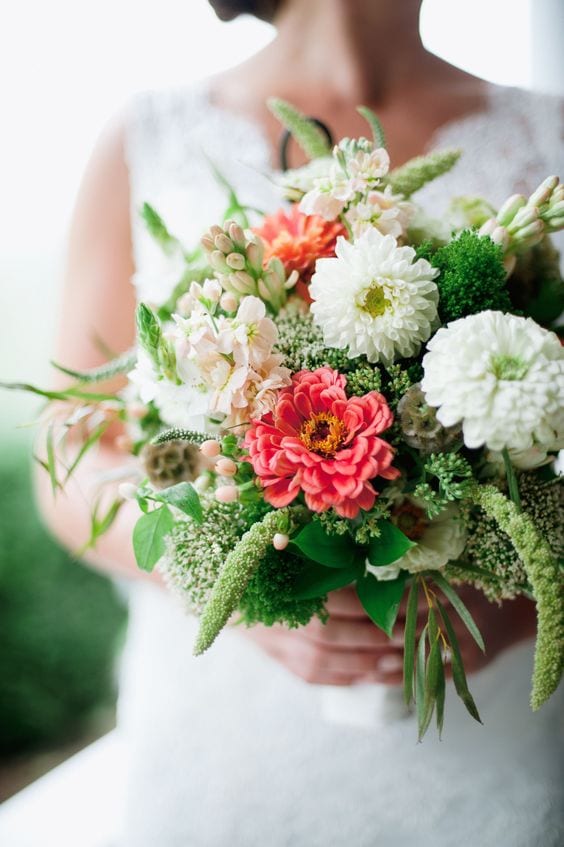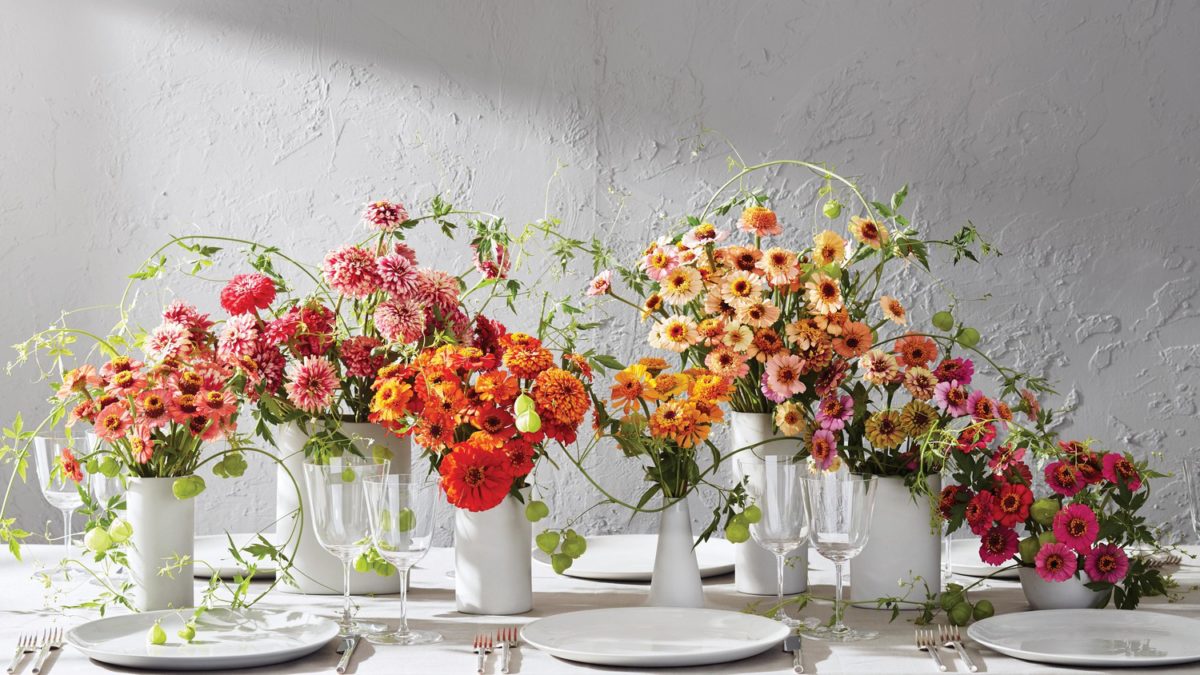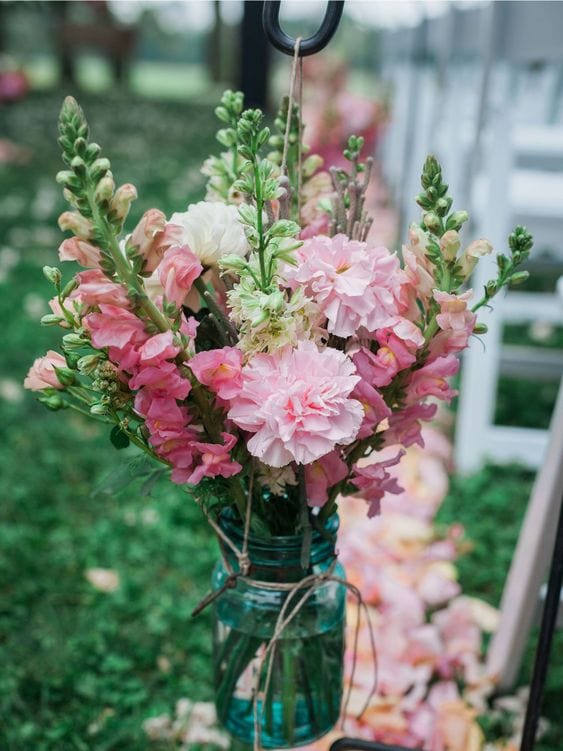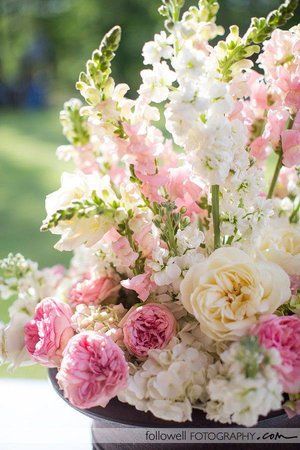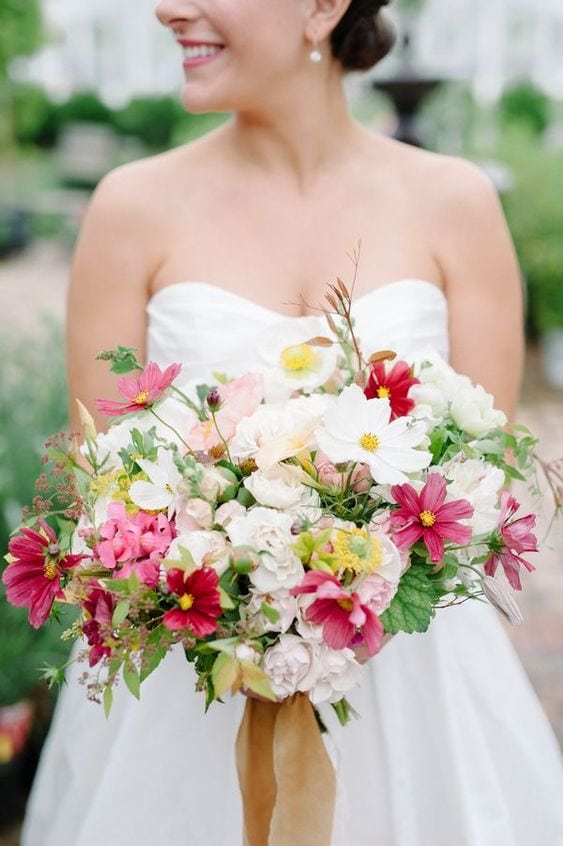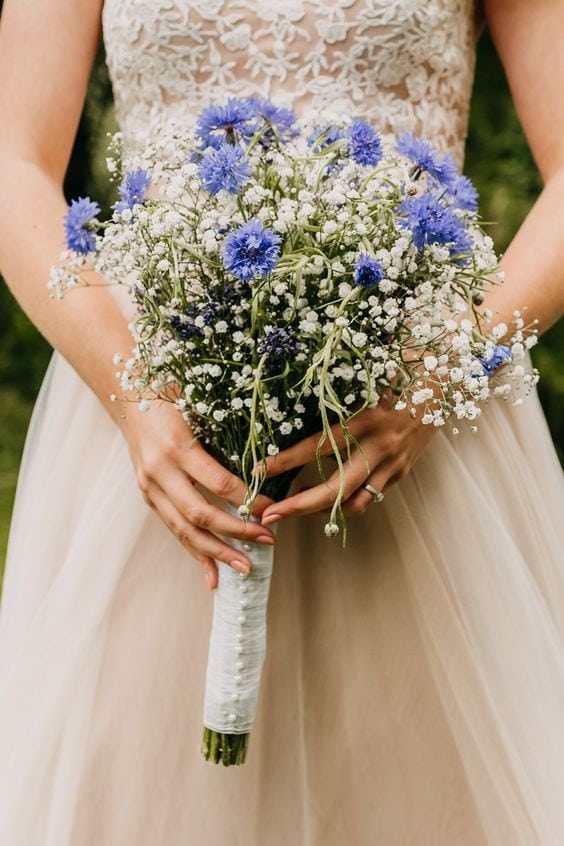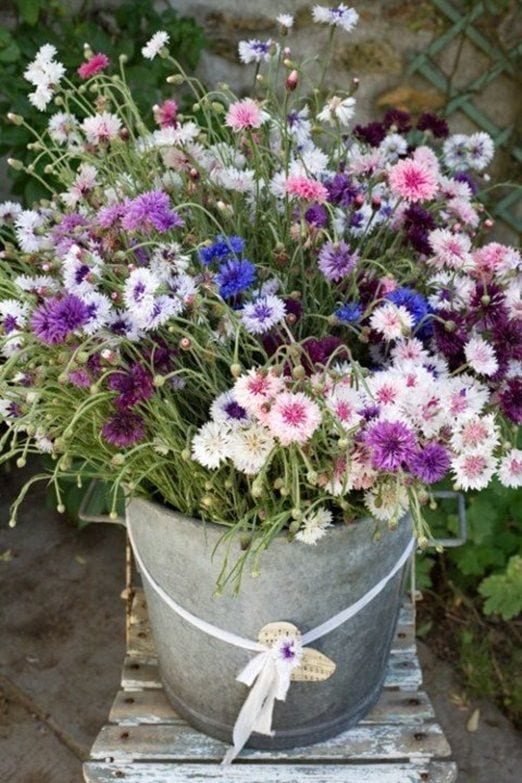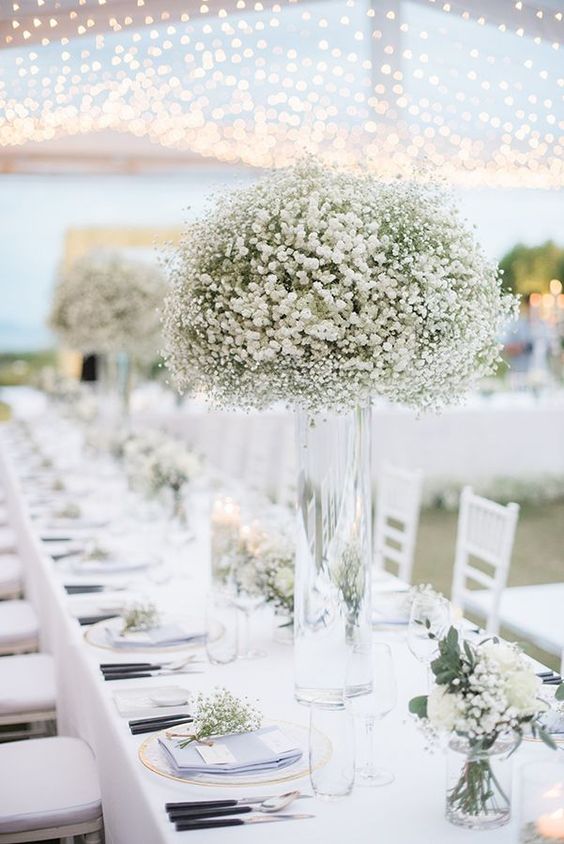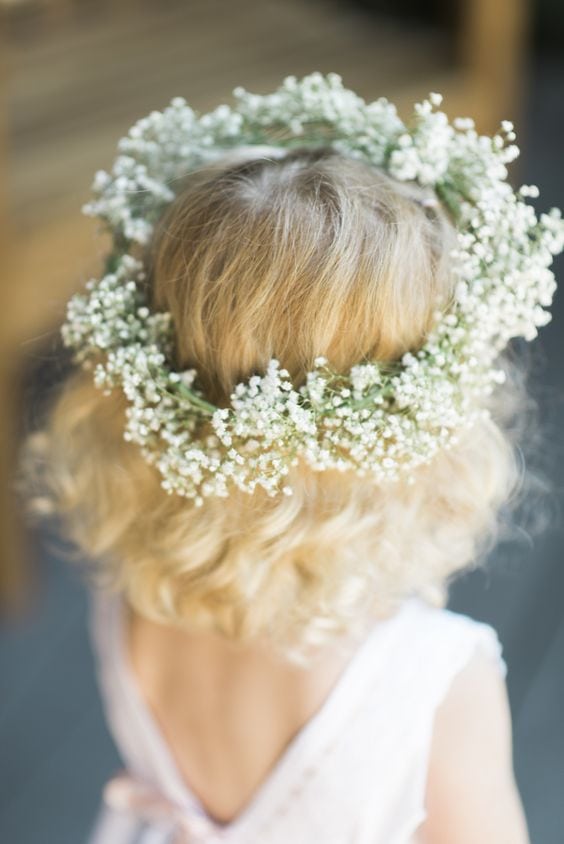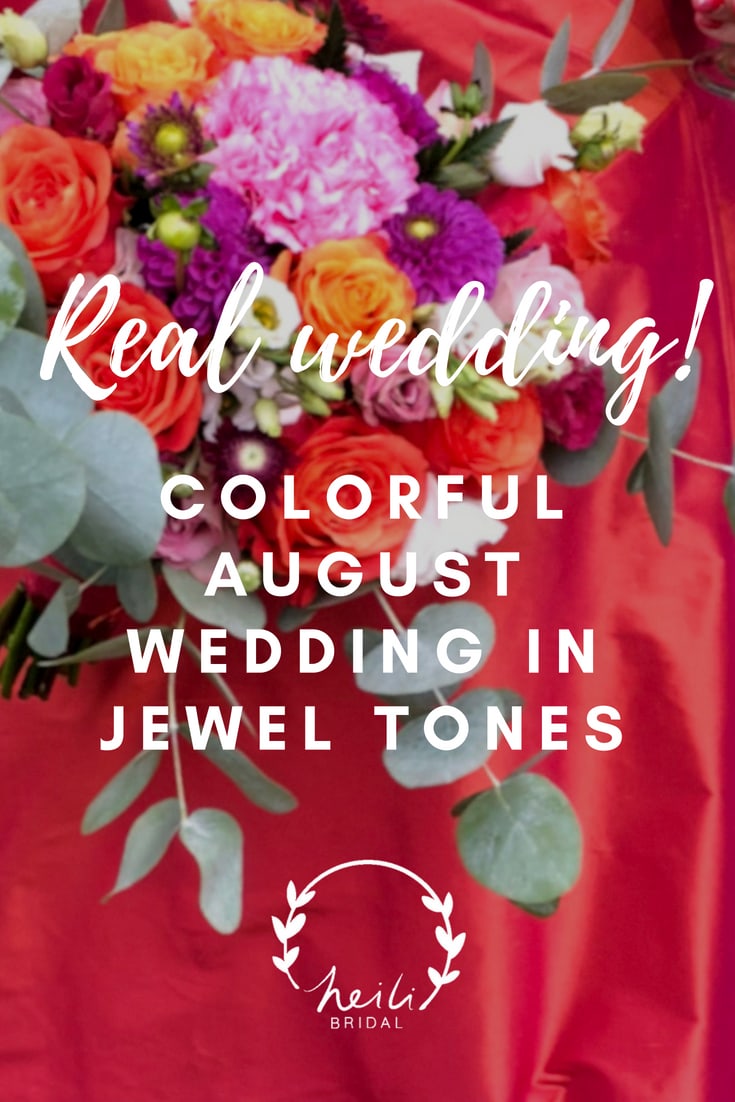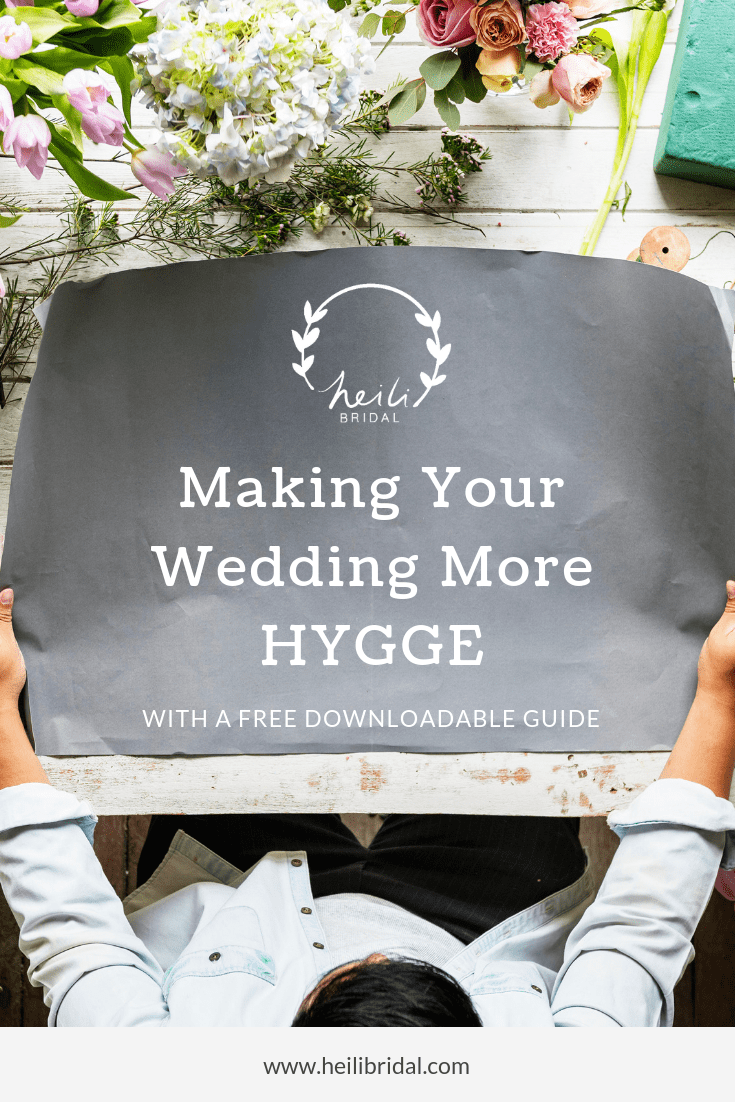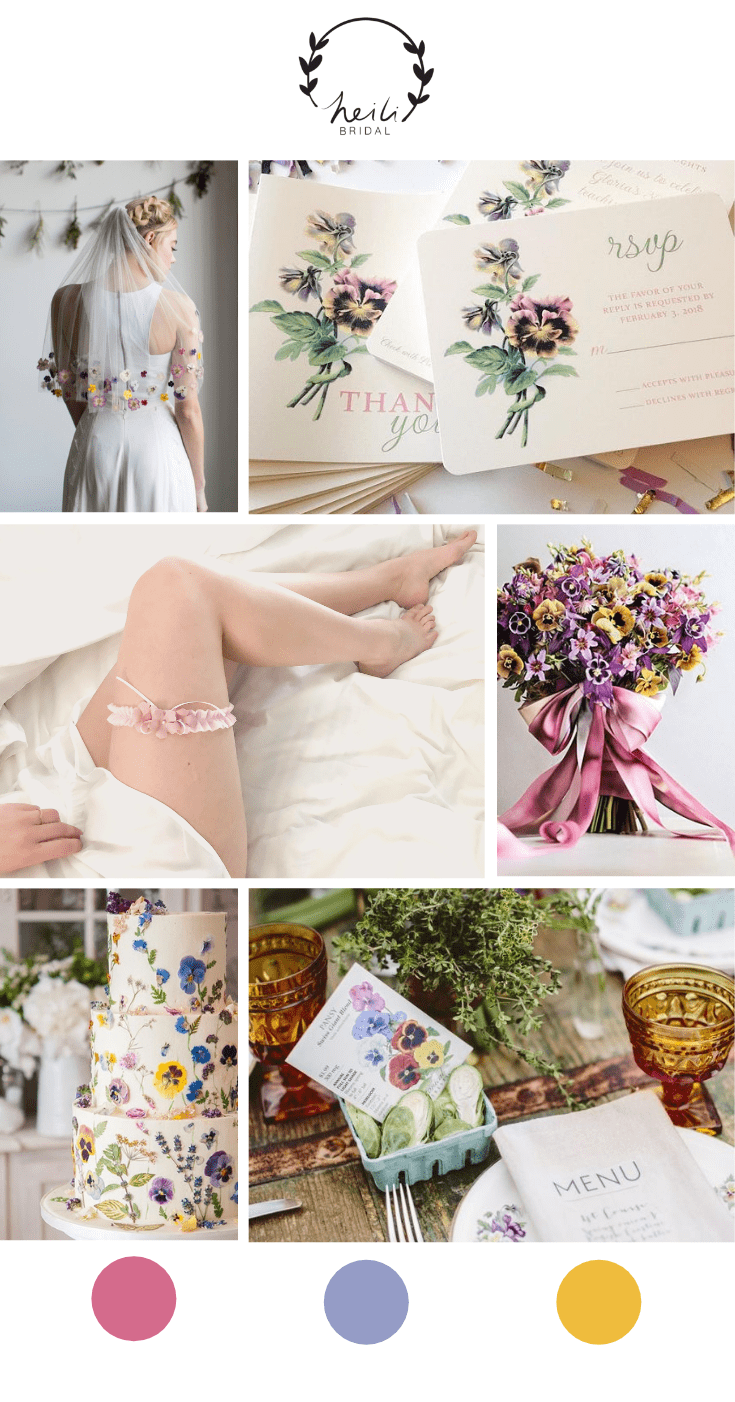10 Easy To Grow Vintage Wedding Flowers
Anyone can grow the most beautiful vintage wedding flowers if they have a sunny spot to use and maybe some soil in their yard to turn over. If you’ve been seeing Floret flower farm’s Pinterest pictures, you already know there is plenty of choice when it comes to wedding flowers you can grow by yourself. I love gardening and that is why I wanted to share my top 10 easy to grow vintage wedding flowers for all the DIY brides out there. You might be wondering if growing a whole cutting garden to get wedding flowers is worth it. Yes it is!
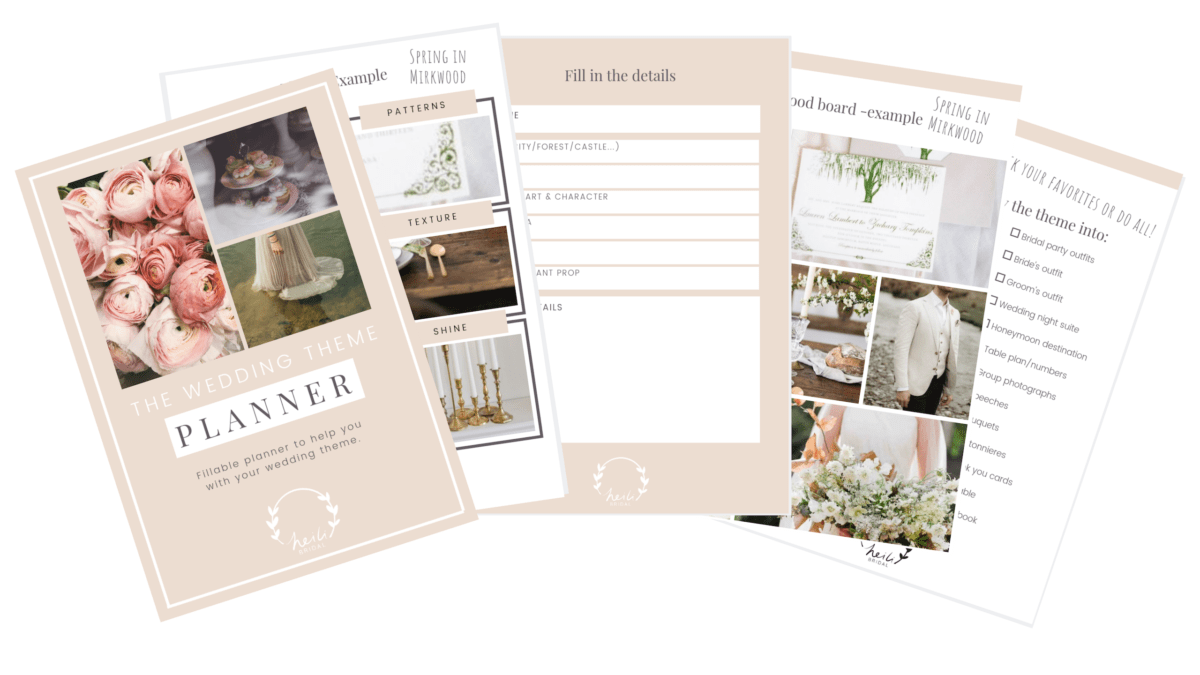
Wedding theme designing made easy!
Growing Your Own Wedding
Flowers
Growing your own wedding flowers is great way to save money in a wedding budget. If you have a sunny spot on your yard or on your parents’ yard and you have twenty minutes or so to use every week for watering and fertilizing growing your own wedding flowers is very much possible.
You’ll have best results if your wedding is in the end of July, in August or even in September as most annual flowers need some time to grow their flowers. I have picked my ten favorite easy to grow vintage wedding flowers for you and some picture examples how they can be used in wedding decorating. In the end I’ll give some pointers how to upgrade DIY wedding flowers to look like luxury flower arrangements.
Here is my top 10 easy to grow vintage wedding flowers!
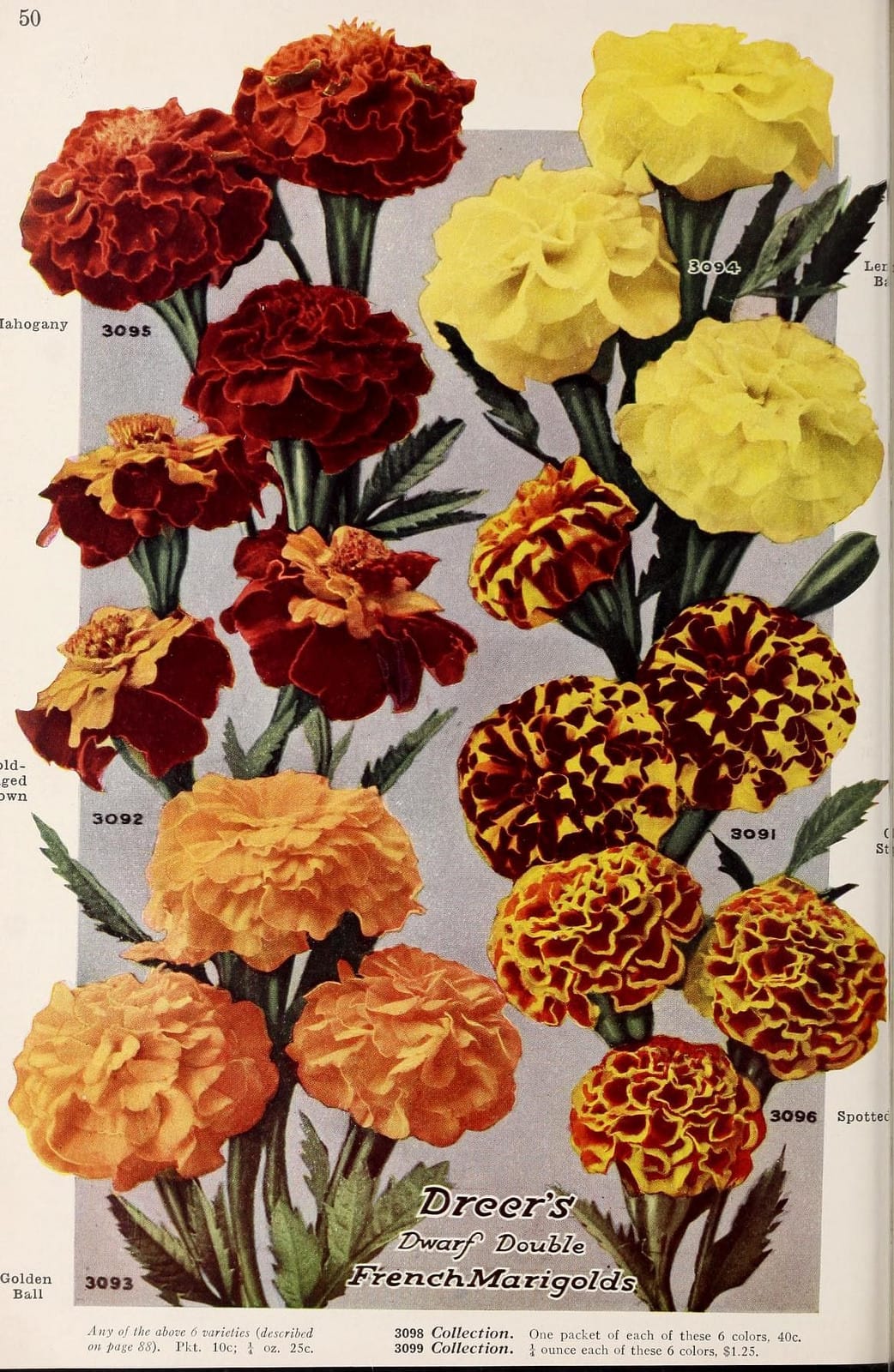
Marigolds
First of our vintage wedding flowers are marigolds. These ones are perfect to grow in pots if you don’t have yard space. Marigolds have been suffering unlovable reputation, but now they are back and one of the hot trends in flower world. They are really hardy flowers when it comes to sunshine and hot weather.
Marigolds stand drought and once they start blooming they continue until late autumn. Choose between big or small ruffled flowers or smaller, more simple varieties. Plant these into outside once the weather get summery warm as they are very tender to frost.
P.S Most people think marigolds as deep, flaming orange blooms, but there are also vanilla white varieties which have wonderful big and showy flowers! In the picture down right you can see French Vanilla Hybrid which has big warm white flowers.
Other white varieties are ‘Snowball’, ‘Snowman’, ‘Kilimanjaro’, ‘Eskimo’ and ‘Snowdrift’. Most of the modern hybrids are odorless, so you don’t have to worry about smelly flowers.

Sunflowers
Sunflowers come with plenty of different varieties including pale butter yellows, reds, oranges and the classic bright yellow. You can also pick whether you want simple ones or ruffled blooms like ‘Teddy’ variety.
For weddings I would choose dwarf types that make several smaller flowers on one flower stalk. Maybe grow few big ones to add some interest or to use as thriller pieces in your bouquets.
Sunflowers do best when planted into garden, but you can also grow them in big pots. Just give them water and remember to fertilize so they have energy to make those gorgeous flowers. Add support stakes for big ones if you have strong winds or open yard.
P.S For vibrant combination use blue sweet peas or cornflowers together with yellow sunflowers. To have more monochromatic and understated version, combine sunflowers with creamy whites and pale yellows.
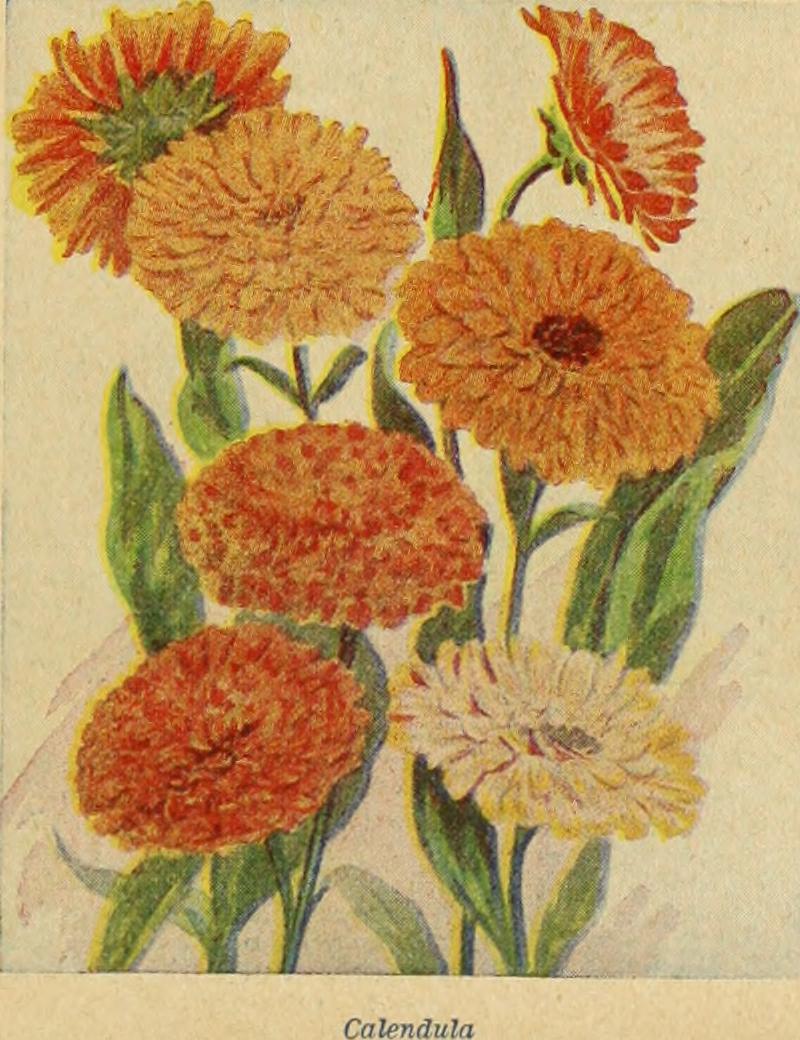
Calendulas
Calendulas are flower churning plant, which just don’t stop once they start. All the different varieties have warm undertone but vary in shape, size and colors. Strong and vibrant oranges mellow into citrusy yellows and different mixes. The flowers are edible and can be used to decorate food.
I would use these flowers as beautiful fillers in bouquets and table decorations. Calendulas are very easy to grow in my experience, so don’t hesitate to get some seeds and start. Plant them in a sunny, warm spot with fertile soil or large container with fresh potting soil.
P.S If you’re not fan of orange or yellow, check out the salmon colored ones like ‘Pink Surprise’ in the picture down right or ‘Sunshine Blush’. There is also one called ‘Snow Princess’ which has pale yellow or creamy white flowers.
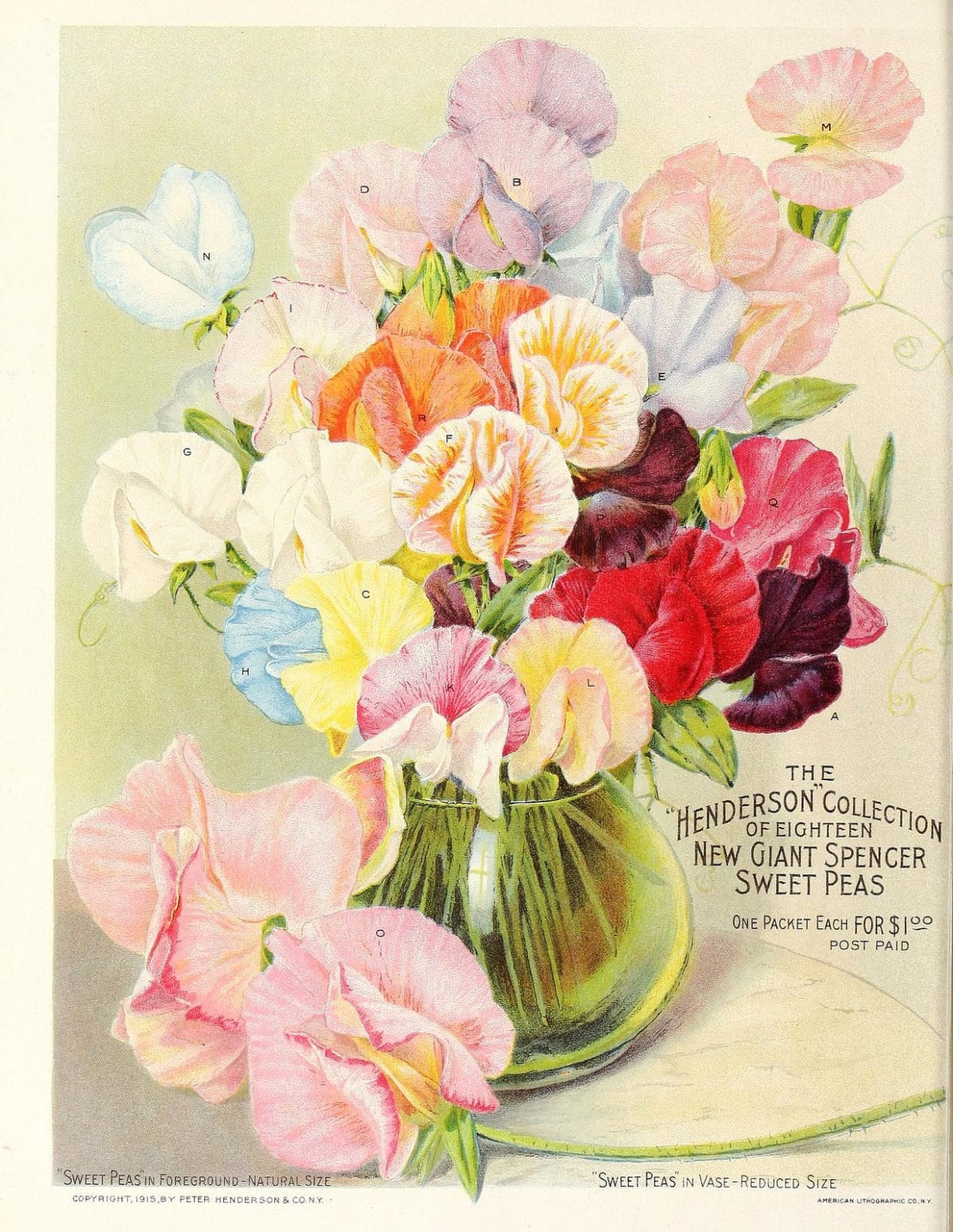
Sweet peas
These flowers are the queens of vintage wedding flowers! With sweet peas you’ll be absolutely spoiled with colors and varieties. Whites, pinks, blues, cold reds and purples are all available for you in mixed or solid colors.
Sweet peas need fertile soil and water, but once they start to bloom you can just pick and pick. The more you pick, more flowers you’ll get, which makes them cutting garden workhorses.
Speaking of horses… Add horse manure or compost to the soil or grow them in big pots with stakes, teepees or other support they can use for climbing. You need to help them a bit by tying them to the support.
P.S Sweet peas get their name from their quite strong, sweet scent. They act great as their own or as bouquet fillers. Along with gentle pastels. sweet peas have also deep colors including dark blue!
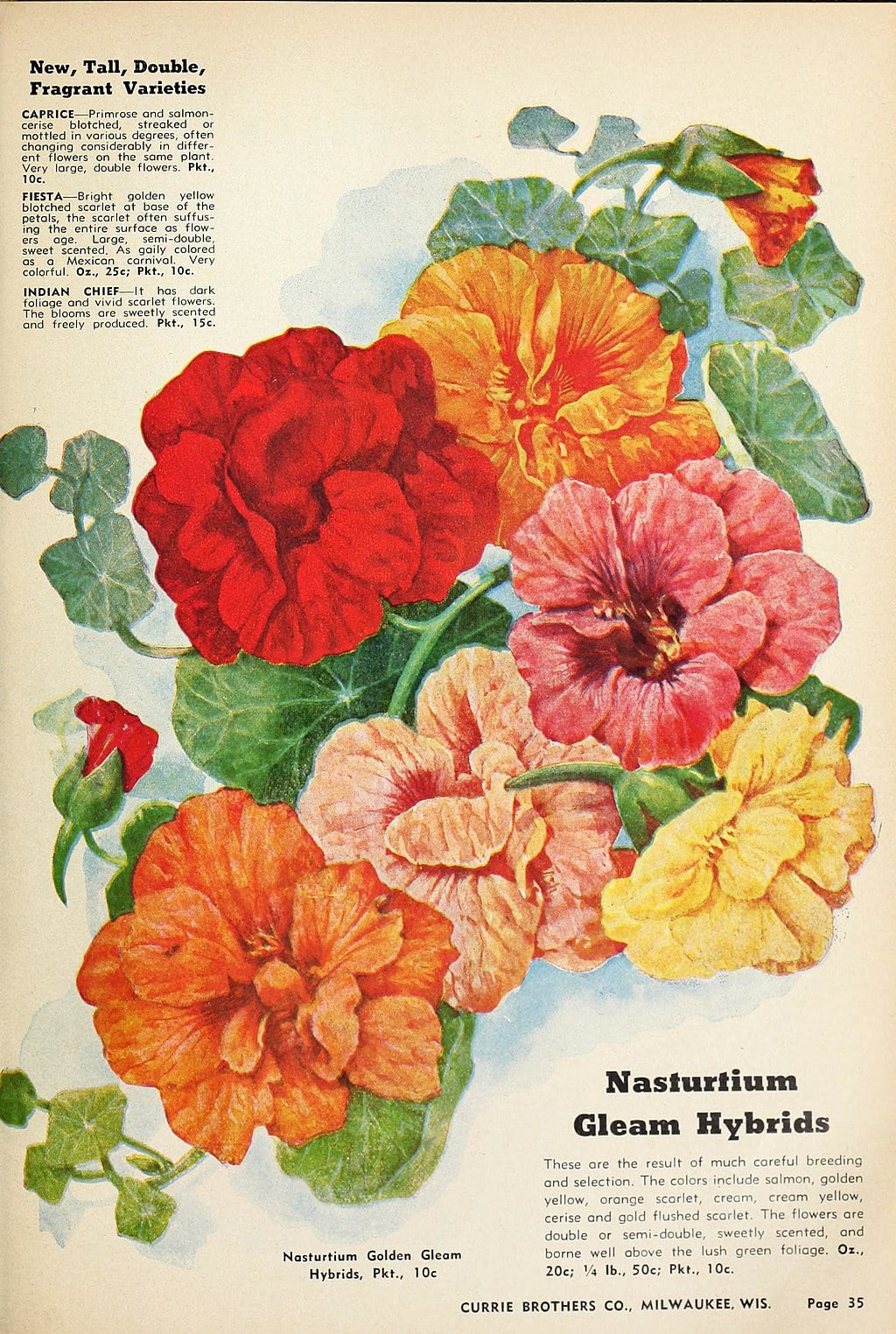
Nasturtiums
These are vine like flowers, which can be mostly left on their own once they are planted into ground. The most typical types are yellow and oranges, but there’s several different color varieties from salmon and purple toned ones to buttery yellows and creamy whites, even dark reds which look almost black.
Nasturtiums also have interesting looking leaves so don’t hesitate to use them as greenery in your wedding flower arrangements. Look for white striped or spotted leaves to add interest. They can stand drought and bloom best in slightly bare, not too fertilized soil. You can grow them also in pots.
P.S In the down right you can see one of the creamy white nasturtium varieties ‘Moonlight’. Other similar pale colored ones are ‘Milkmaid’, ‘Yeti’ and ‘Ice Age’. Nasturtiums are not your most typical vintage wedding flowers, but as they are so easy to grow I wanted to give them a place in the spotlight.
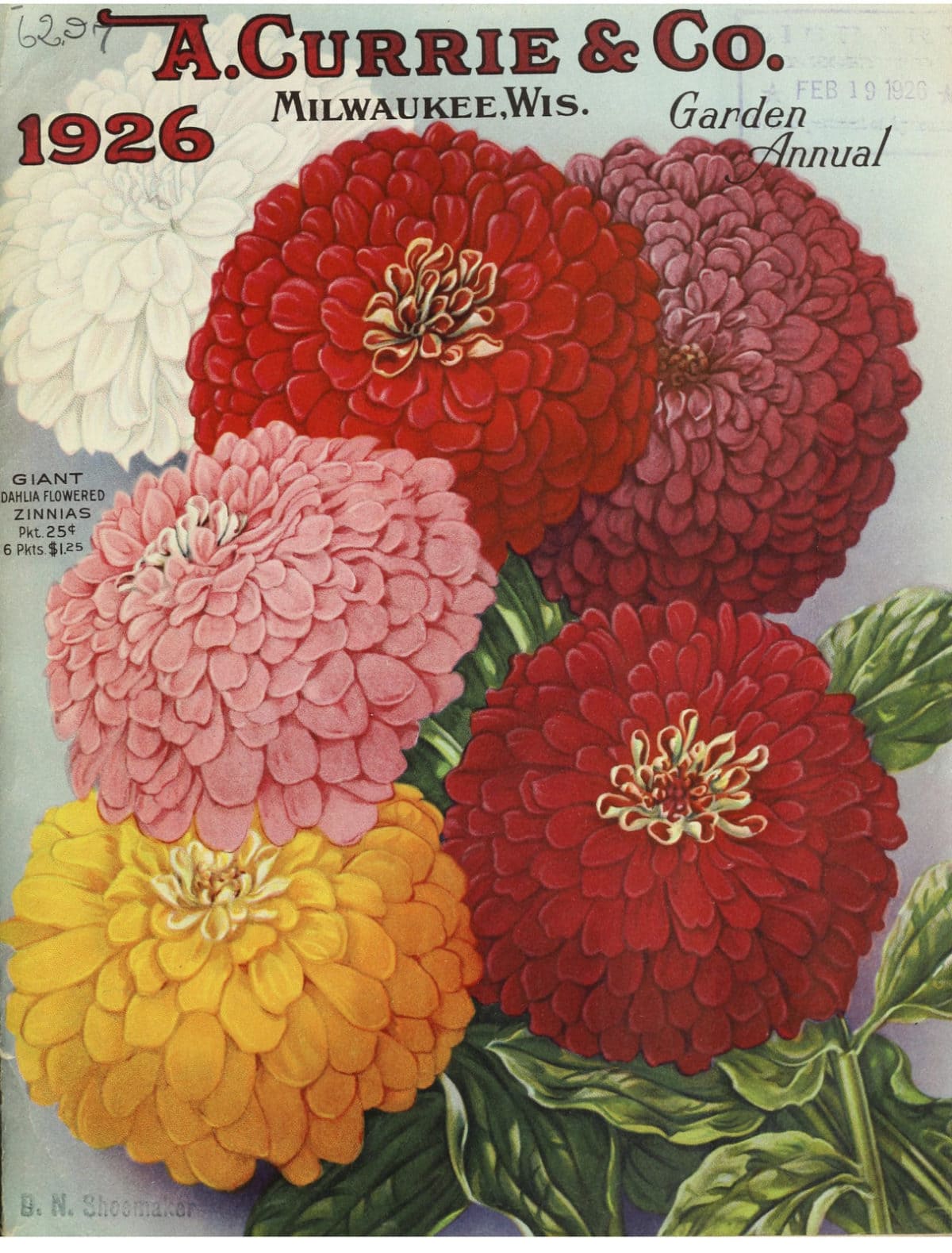
Zinnias
These are one of my favorite easy to grow vintage wedding flowers as they are very similar to dahlias and carnations in their shape and are easy to grow on your backyard in a sunny and warm spot.
Zinnias come in staggering amount of sizes from little buttons to size of a small fist. Trendy colors that are very fit to weddings are white, salmon tones, raspberry, lime and different pinks and fuchsias. I have been drooling over zinnias from Floret flower farm because they have stunning colors!
P.S Grow several different sizes in same colors in your cutting garden for interesting results. Use flowers in different stages from fully opened to flower buds. The bigger varieties work wonderfully well as thrillers in your flower arrangement while smaller ones act as fillers.
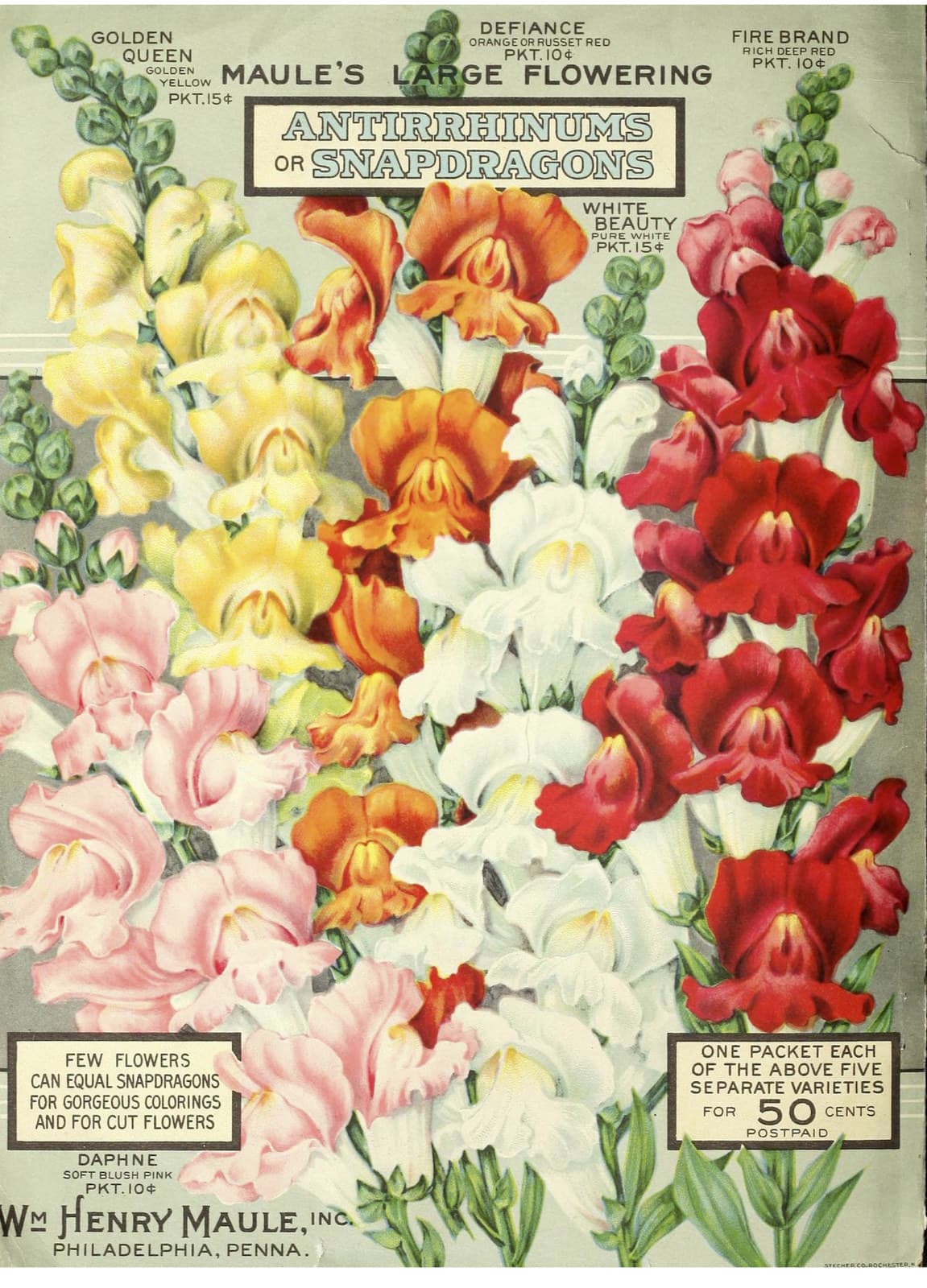
Snapdragons
These flowers have height and are great for creating levels for wedding bouquets or decoration. Tall flower stalks are ultimate cottage garden style vintage wedding flowers. Snapdragons have plenty of delicate pastel tones, but also deep velvety reds. Grow tall varieties fit for cut flowers for your wedding decorating.
These flowers need fertile soil, sun and some water for you to get plenty of blooms. You can start the seeds in little pots one to two months before you can plant them outside after the last frost. Even though they love sun snapdragons do not stand sweltering heat, so try to find them a place in your cutting garden that is not baked in the sun.
P.S Snapdragons work beautifully on their own in a wedding bouquet! Get big bunch of them and spread them open in a roundish shape and tie it all together with silk ribbon for a show stopping bouquet.
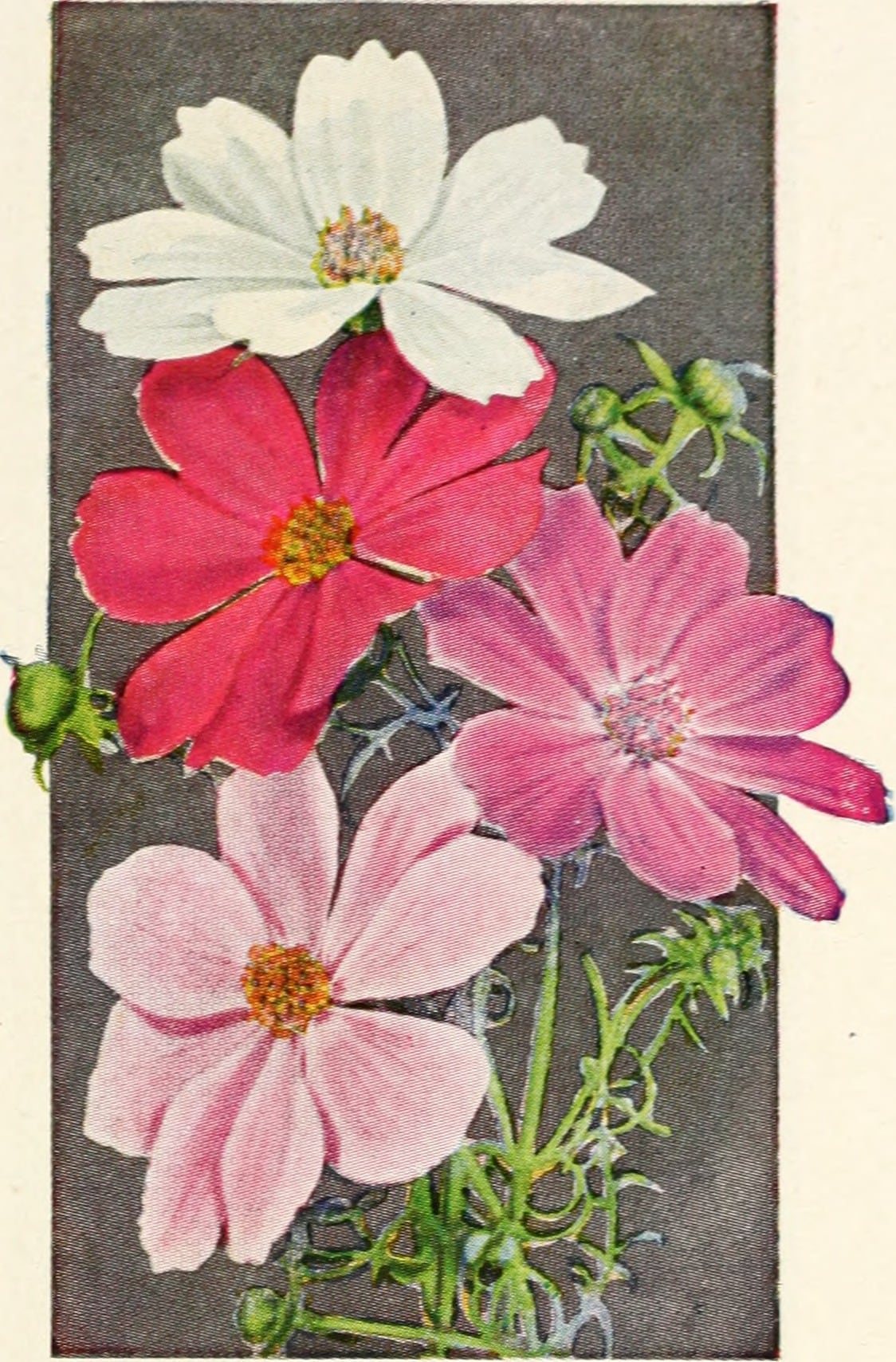
Cosmos
With their silky petals and different pinks and whites, cosmos flowers are the ballerinas of this flower list. They remind me of frail daisies and have beautiful dill type greenery that works well as filler in your DIY wedding flower arrangements.
Cosmos flowers can be grown in ground or in pots and they actually prefer soil that is not too rich or heavily fertilized. These flowers can stand drought and heat, even a sun baked spot.
I tried to grow cosmos flowers one year next to my pumpkin patch. They grew huge green foliage, but not flowers. Later I realized that where the pumpkins need lots of fertilization, these beauties bloom better in poorer soil. The calendulas on the other hand were blooming like crazy in the very same veggie patch. I learned a lot that summer!
P.S In the first picture down below you can see cosmos paired with delightful small sunflowers ‘Vanilla Ice’, which have buttery yellow, almost warm white color.
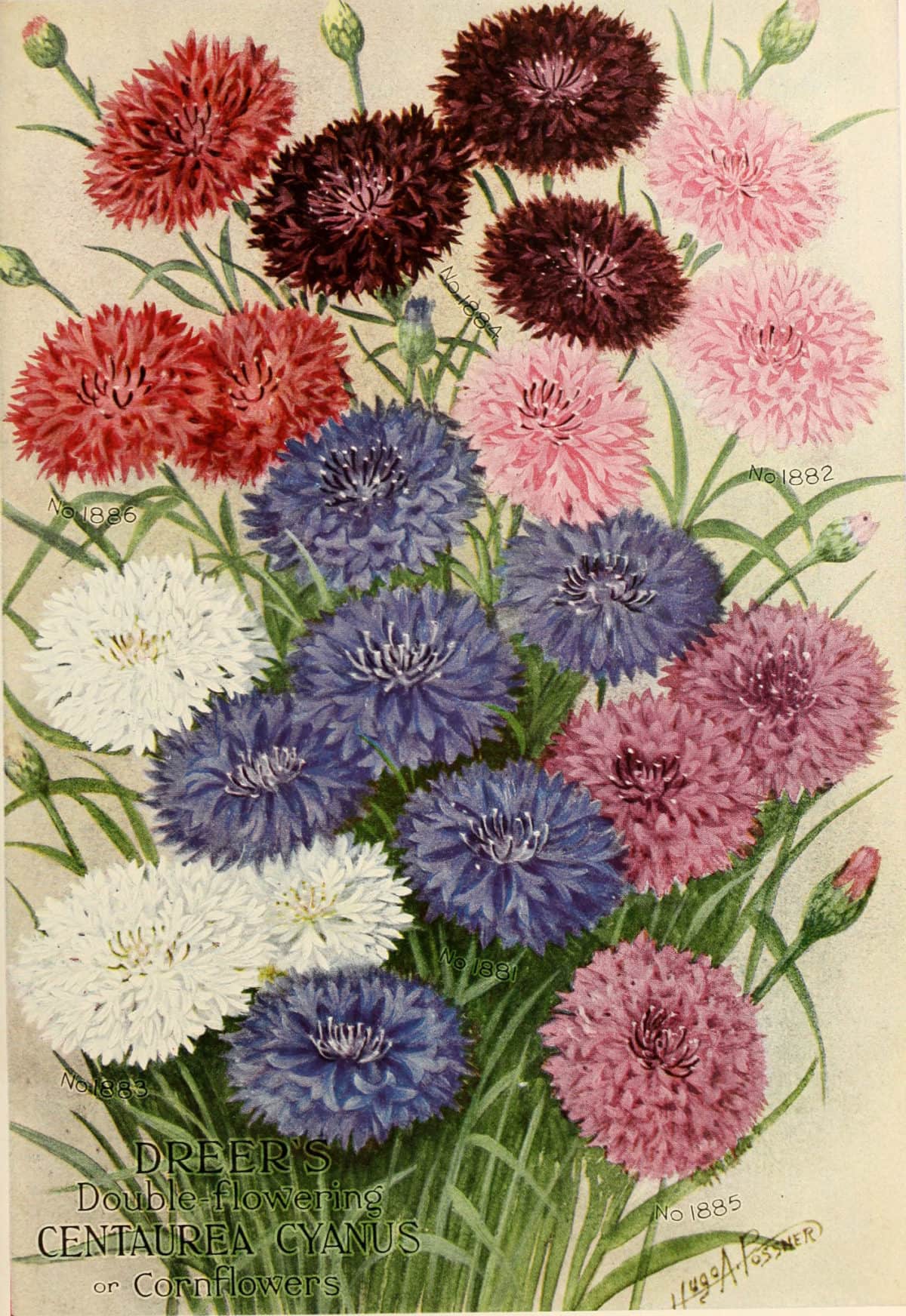
Cornflowers
These flowers have rustic and vintage feel in them and come primary in blue. They are also available in violets, pinks and whites and mixed tones, so you’ll surely find your favorite. Blue ones are one of the most iconic vintage wedding flowers because they used to be plentiful in countryside in earlier decades.
They used to grow as weeds in the sides of roads and corn fields, which tells all about the conditions they like. Cornflowers do well in soil that is not too rich and they need of sun to produce flowers. In that sense they have similar needs as cosmos flowers.
Once they start to bloom you should pick flowers as the more you cut the more bushier they will become and more flowers you will get. Choose taller varieties to grow as cut flowers.
P.S For a monochromatic blue bouquet pair cornflowers with blue sweet peas. You can upgrade the look by buying from one to three big blue hydrangea blooms from any florist shop.
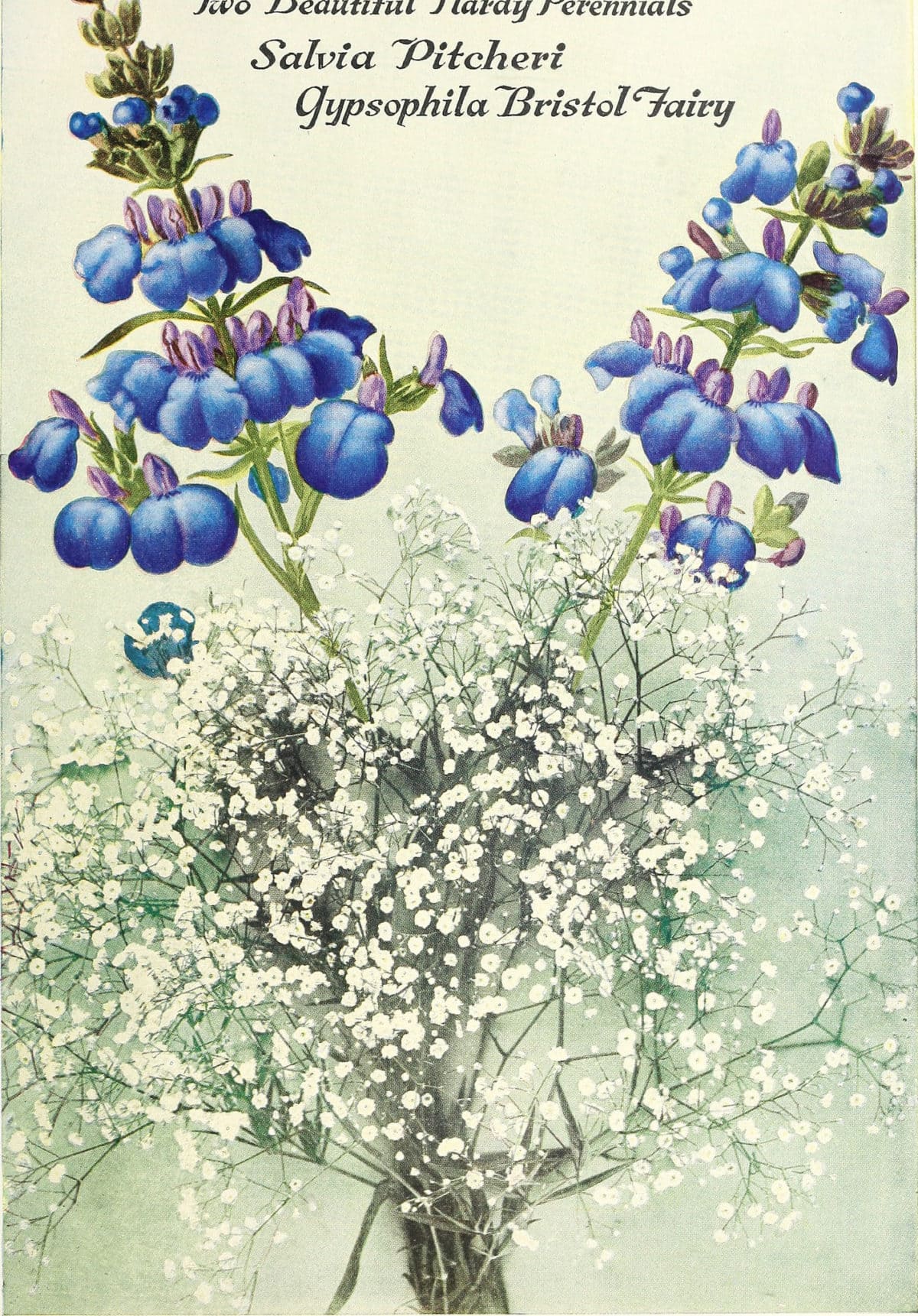
Gypsophila a.k.a Baby’s Breath
If I had to pick just one sort to grow for wedding decoration, I would pick Baby’s breath because it comes in white, pink or red. Gypsophila is either annual or perennial and it loves full sun.
Baby’s breath is one of the trickier ones to grow but that is mainly because for weddings they are picked just when they start to bloom. This is what West Coast Seeds say about growing it for weddings:
To grow for summer weddings, direct sow large amounts at regular three week intervals starting in early spring when there is still a risk of frost. Keep plants relatively crowded. This is the only way to ensure that at least some of your Baby’s Breath will be at its peak for your special event.
P.S Many bouquets in the pictures here have been built with baby’s breath and blooms from one other flower.
Tips For Growing Your Own Wedding Flowers
These easy to grow vintage wedding flowers are annuals, which means you grow them for a summer and they die back once winter comes. Almost all annual cutting garden flowers love full sun, need fertilization and some water to keep happy and produce big and plentiful blooms.
Water the plants daily or every few days when they are just sown or small seedlings. The ground shouldn’t be soggy or muddy, but feel cool to your hand or fingers when you dig them down inch or two and leave your hand with soil stains once you draw it back. For most flowers mentioned here the soil drying out a bit from time to time is good and they can stand bit of drought. If you plant in pots you need to water them all summer. You can stop watering flowers which are planter into ground altogether once they start to look matured and strong if you don’t have hugely hot summer.
Fertilize your cutting flower garden by adding some rotten manure, compost or commercial slow releasing fertilization into the ground before planting. It’s good to add some kind of liquid fertilizer while you water your flowers once a week or so. Ask about good fertilizers and how to use them for annual flowers from your local plant nursery.
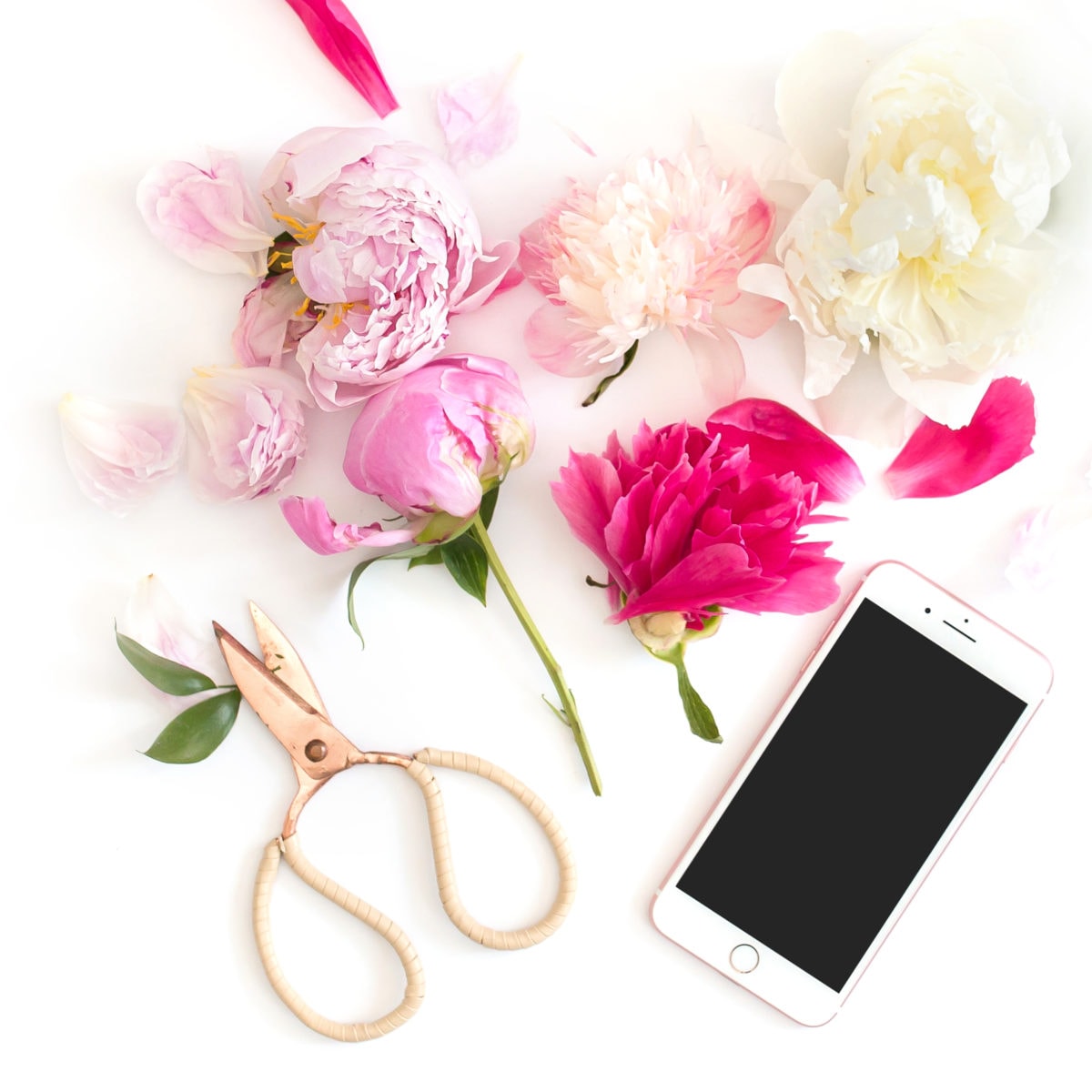
Tips for growing your own vintage wedding flowers:
- Check the info from seed packets or search internet
- Ask help from your local nursery about sowing dates etc.
- You can get free seeds from your local gardening groups
- Pick only few different flowers but plant plenty of them
- Figure out the colors you want before buying seeds
- If you use seed mixes, keep in mind that they often have more bright colors in them than whites
Why Did I Choose These Flowers
All the plants I mentioned here are annual flowers you can sow from seeds for your cutting garden. They enjoy pretty much similar sunny spot and can be grown next to each other.
I have grown most of these in my own garden in Finland in Finnish zone 3, where our last average frost date is during the second week of May, although we may have occasional dips into zero at nights well into June.
Sow plenty of each kind you want as you need big armfuls of blooming flowers for your wedding day. This way you’ll have enough open or almost open blooms for this one occasion.
Remember to pick them often as soon as they start to bloom so the plant will start to produce more flowers. This doesn’t apply to sunflowers, but most of the others are cut-and-come-again type of cutting garden plants.
Upgrade your self grown wedding flowers with:
Roses
Peonies
Dahlias
Eucalyptus
Lemon leafs
Philodendron
Ribbons

Now it’s time to start planning and buying seeds to sow, so you will have armfuls of beautiful vintage wedding flowers come late summer. If you’re interested about DIY weddings, go and check out Heili Bridal’s Hygge Wedding blog post and post about planning and designing your wedding theme.
P.S Did you notice the Free Wedding Theme Planner? It has checklists, tips, fillable moodboard and worksheets that give you the kickstart to wedding theme planning. You’ll discover how to make your wedding day look like it has been styled by a designer. Go and get it! <3
Follow us on Instagram and Pinterest for more wedding inspiration! You can also find Heili Bridal from Facebook and Tumblr.
Pin it for later!
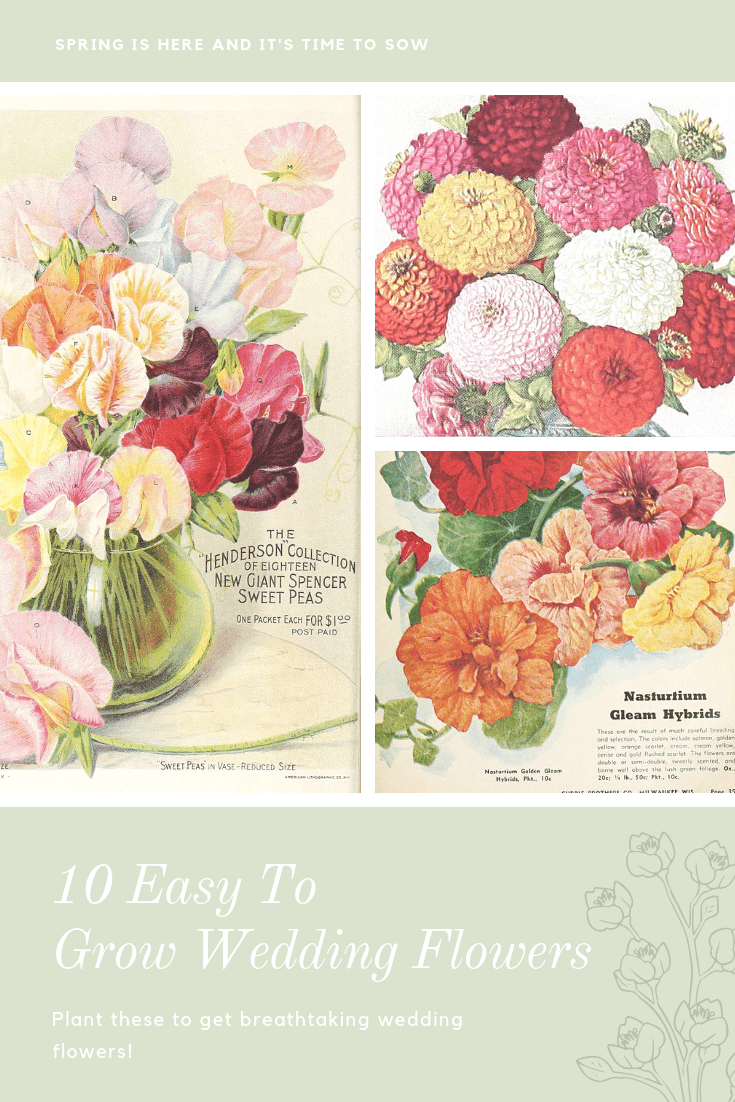

Love,
Iida

Iida Silvennoinen
Designer, author, blogger
Iida is a bridal designer at Heili Bridal and her passion is to help brides feel special in their big day. She grew up in the middle of wedding dresses and has been dressing brides in all shapes and sizes for years. She loves gardening and relaxed evenings at home.
Iida Silvennoinen is the author of The Wedding Dress Book in which she walks the bride through the wedding dress searching and shopping.
START THE JOURNEY TOWARDS THE PERFECT WEDDING DRESS!
The only wedding dress guide you need is here.

